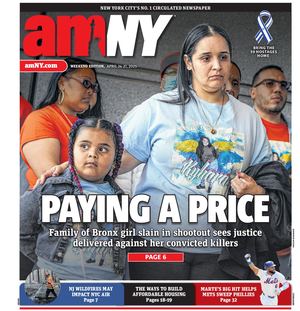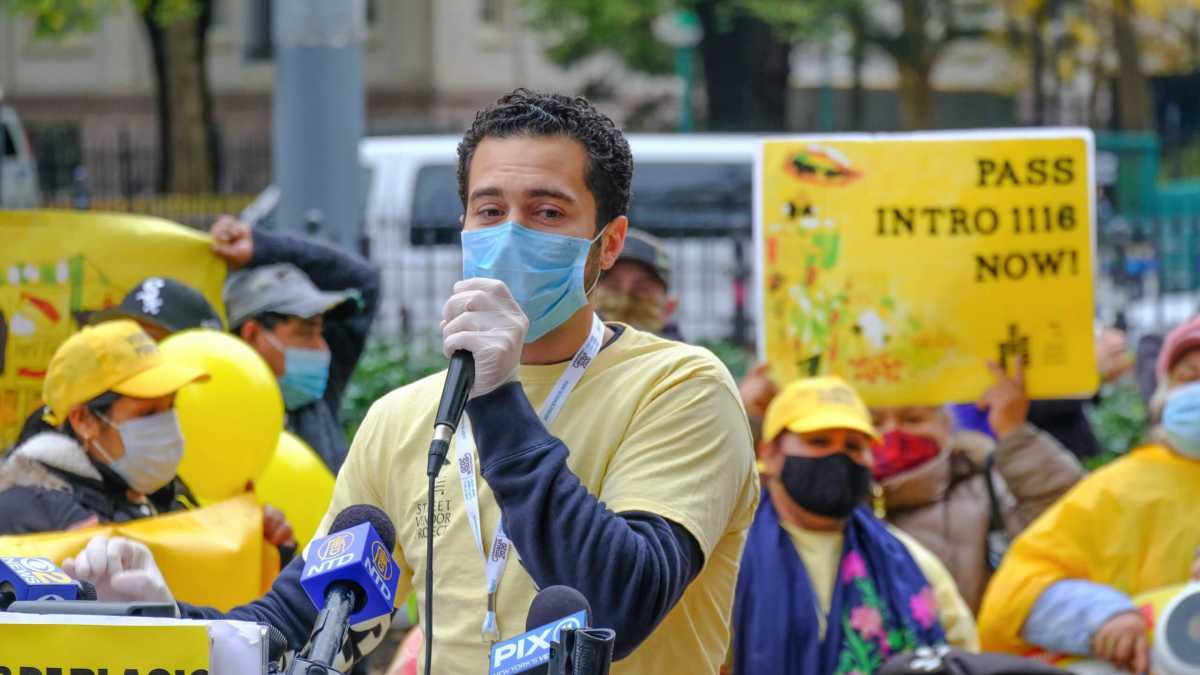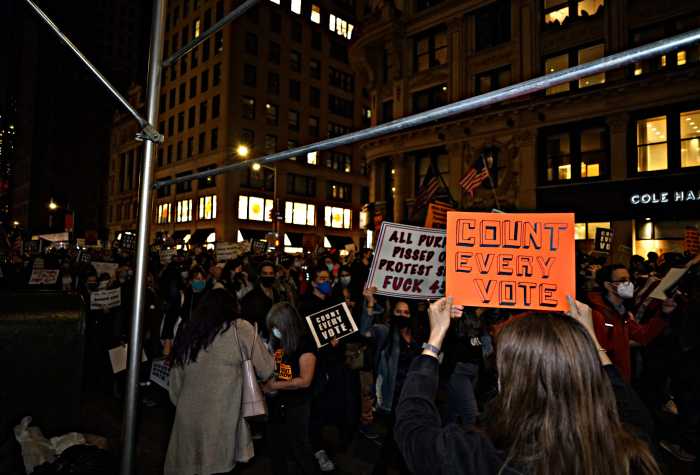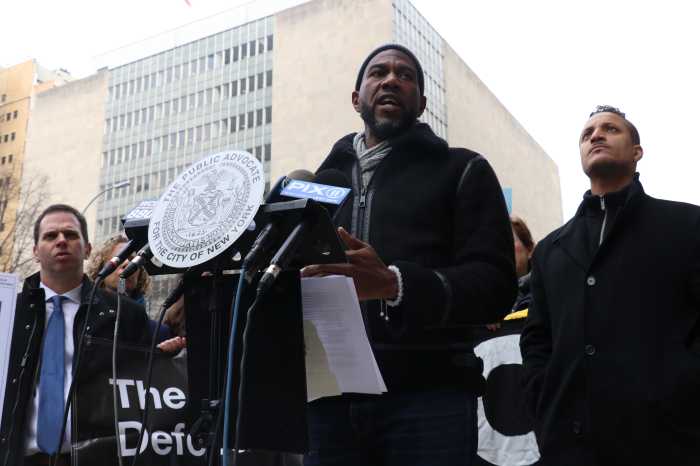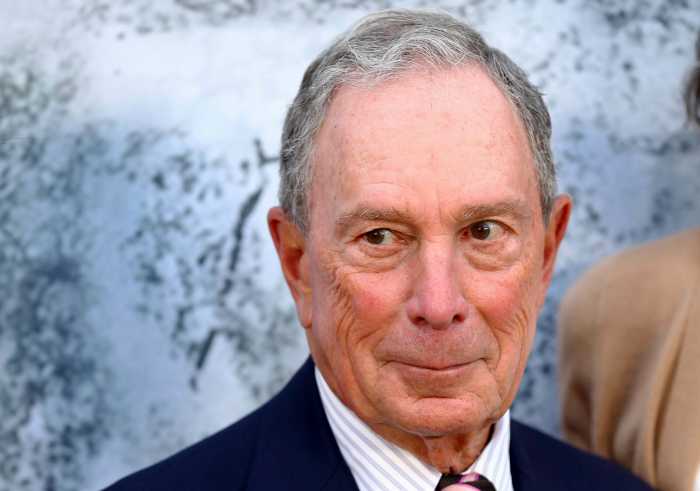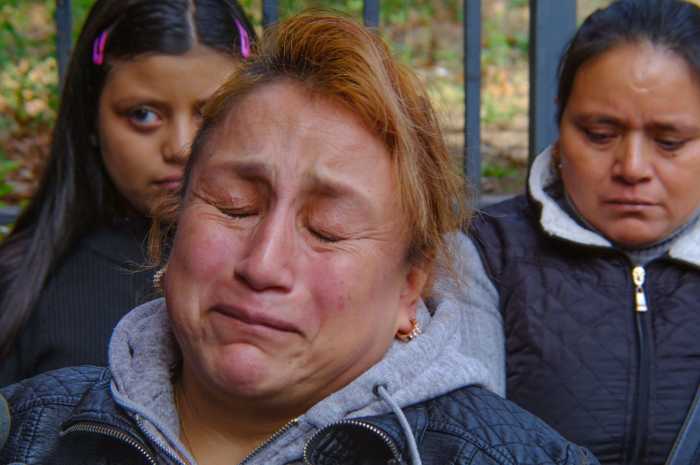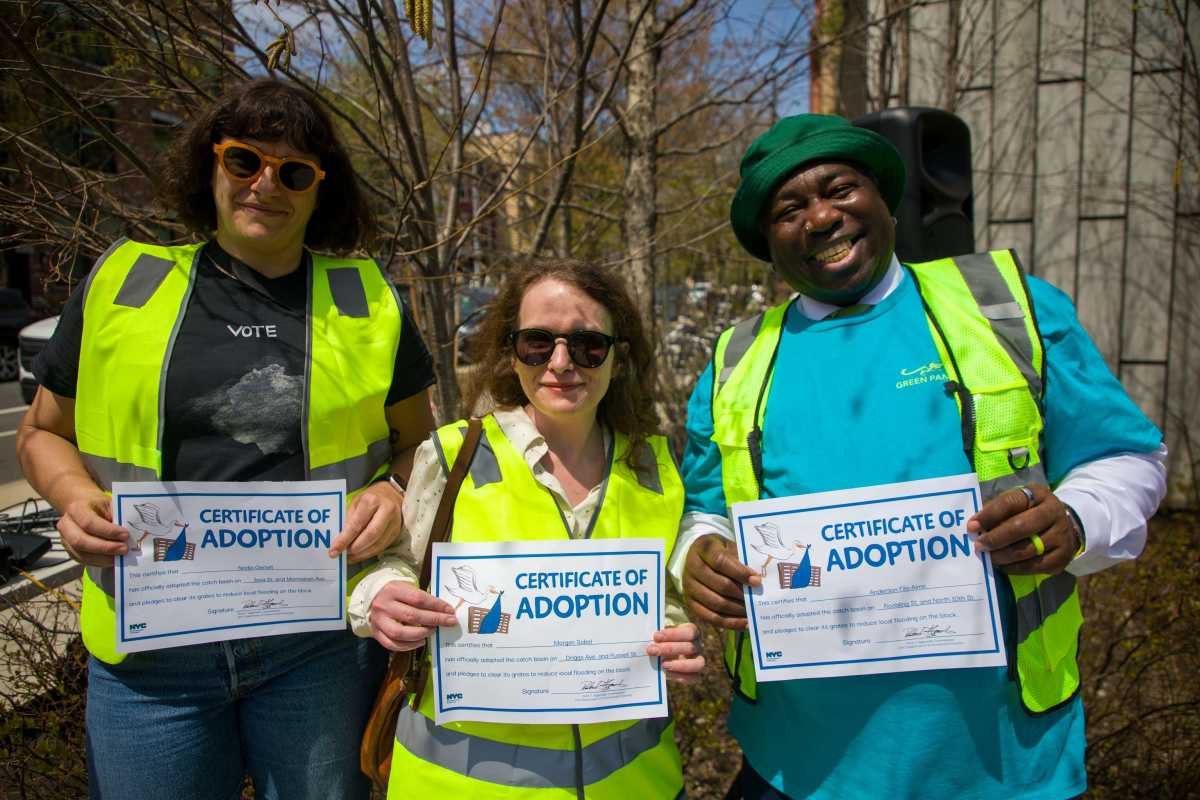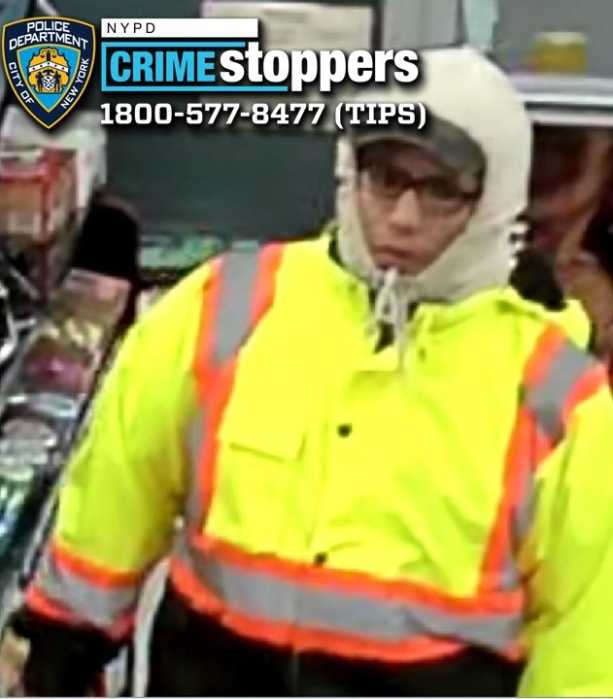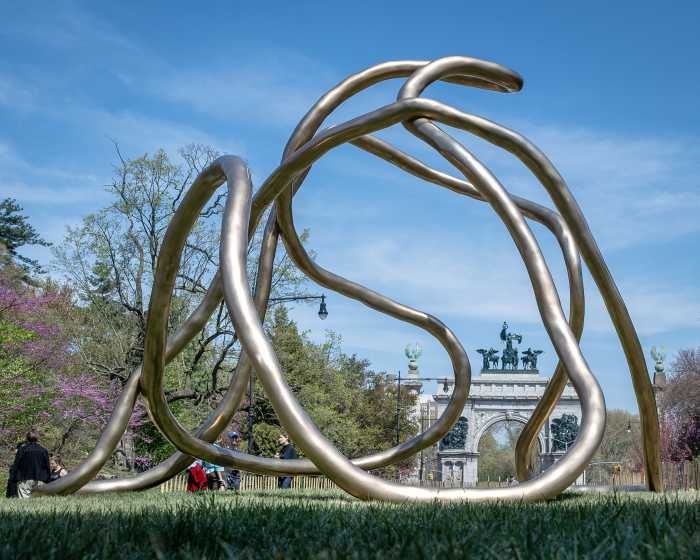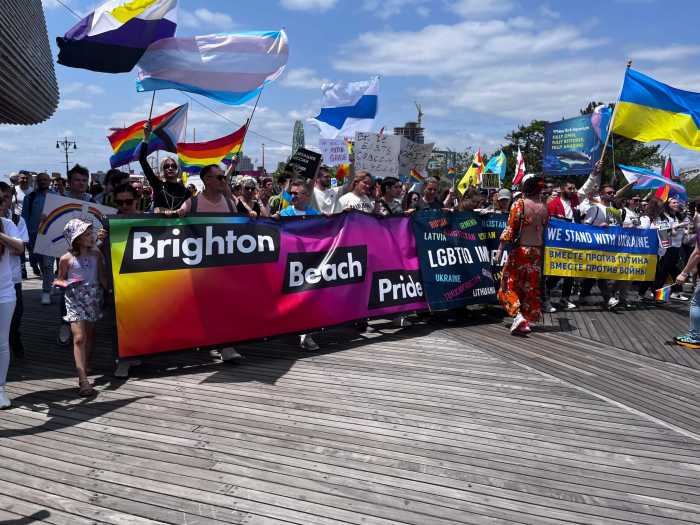One year after the “churro lady,” Ana Alvarado, was filmed being arrested by NYPD’s Transit District at the Broadway Junction subway station in Brooklyn, organizers marched to Manhattan on Nov. 12 to again urge the City Council to end police harassment of street vendors.
The march of over 200 people from across the Brooklyn Bridge to 1 Centre St. in Lower Manhattan on Thursday called on lawmakers pass Intro. 1116 to lift the 4,000 cap on the number of vendors citywide which has been in place since 1983, leaving many immigrant businesses without vendors permits and victim to over-policing.
Councilman Carlos Menchaca, who sponsored the bill, called on Mayor Bill de Blasio to work with other elected officials in the city to see the legislation introduced as far back as September 2018 finally signed into law.
“We need this bill done now for the support of so many vendors that want to enter the economic system of this city. What we’re asking for is the opportunity for legal permits to go to thousands of more vendors, this is part of what we need to do in our recovery,” Menchaca said. “If you walked and talked with any of these vendors, many of them are hungry right now without the support of the city, the state or the federal government and all that is stopping us right now is a vote in the City Council.”
According to Mohamed Attia from the Urban Justice Center, while vendor permits are capped at 4,000, there could be as many as 20,000 people selling food and other goods in the streets of the five boroughs.
“The city has failed in regulating street vending, the city has failed in supporting street vendors, the most marginalized small businesses in our city didn’t get any support before COVID, during COVID or after COVID,” Attia said. “Intro. 1116 will be the first step in the right direction… It is only one step in a very long road.”
Manhattan Borough President Gale Brewer took to the mic to emphasize the contribution street vendors make to the New York City economy, sum $293 million.
Mayor Bill de Blasio, after the unrest that followed the death of George Floyd, put a task force in action to reforms some duties under the purview of the NYPD with one of them being regulating who is selling what beyond the brick and mortar.
“Street vendor enforcement should no longer be the responsibility of the NYPD,” de Blasio said in June. “A civilian agency should handle that. And the street vendors, it’s an area that New Yorkers feel passionately about, it is an example, what street vendors do, of so many people creating their own business, so many people trying to experience some version of that American dream that often feels elusive lately, but still is there. For so many people of color, for so many immigrants street vending is their opportunity to move forward. They should not have to engage the NYPD as they’re trying to make their livelihoods. Civilian agencies can work on proper enforcement and that’s what we’ll do going forward. “
But NYPD is not the only agency accused of treating street vendors with a heavy hand.
In April 2019, activists had one victory in the form of a settlement paying reparations for fines and destruction of property by the city Department of Health and Mental Hygiene (DOHMH). It took two years, but up to 300 vendors were paid out from a fund of $188,000 by the city.
Also in attendance at the rally on Thursday was Public Advocate Jumaane Williams and Councilwoman Margaret Chin.
While the street vendors who turned out did what they do best – serving food – a mariachi band and traditional Mexican dancers held the crowd’s attention.
